Instructions on how to use the Command Line Interface (CLI) to deploy a Service Gateway virtual appliance with Microsoft Hyper-V.
Verify that system requirements are met. For more information, see
Service Gateway appliance system
requirements.
Procedure
- Go to .
- Click Download Virtual Appliance.The Service Gateway Virtual Appliance panel appears.
- Select Microsoft Hyper-V (VHD).
- Select a virtual appliance specification and click
Download Disk Image to download an VHD file in a
compressed archive.

Tip
Copy the registration token for later steps. The registration token will expire within 24 hours if not used. - Extract the VHD file using a ZIP extractor.
- Create a virtual machine.
- On Hyper-V Manager, right-click on your machine and .
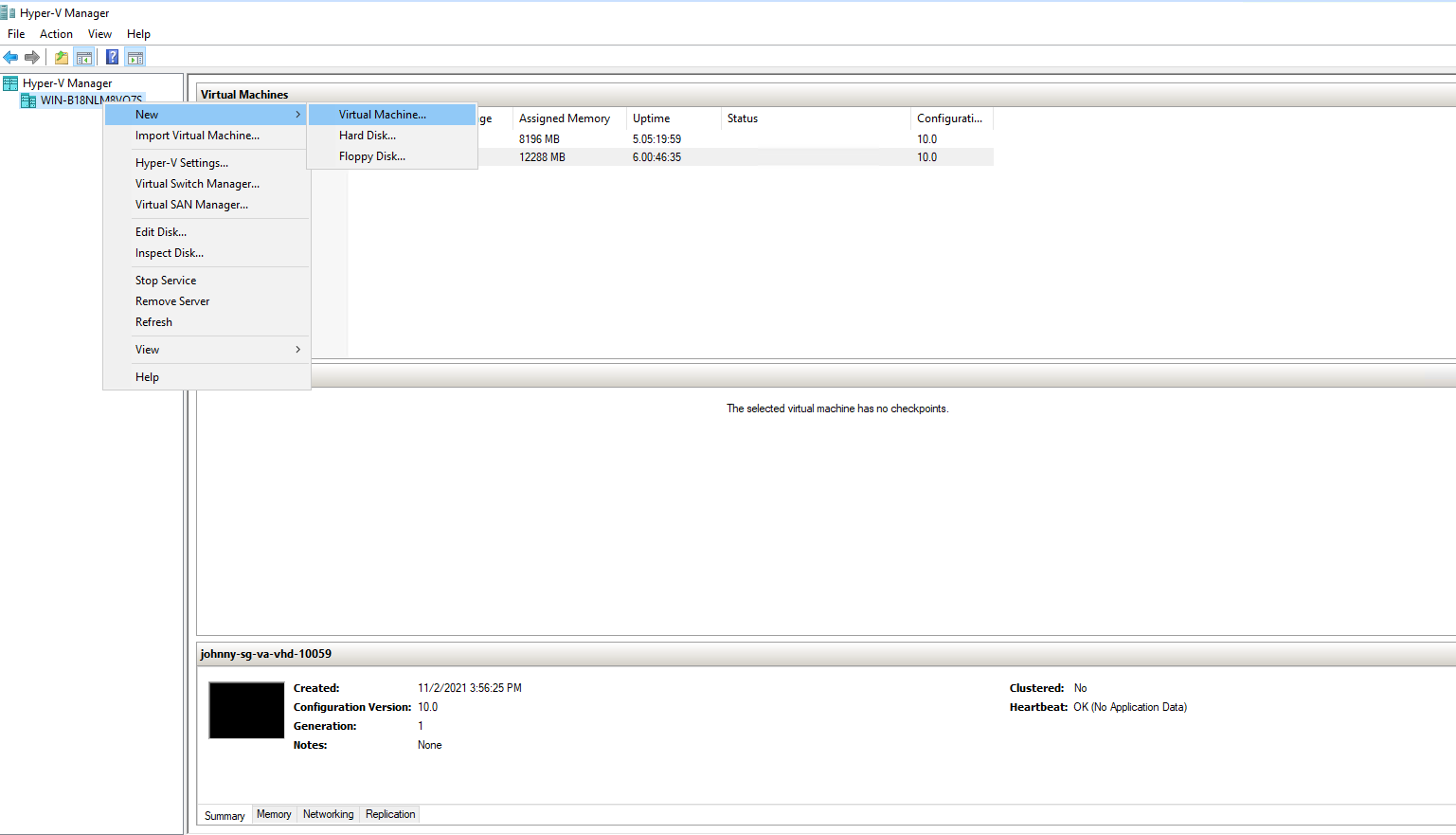
- Click Next.
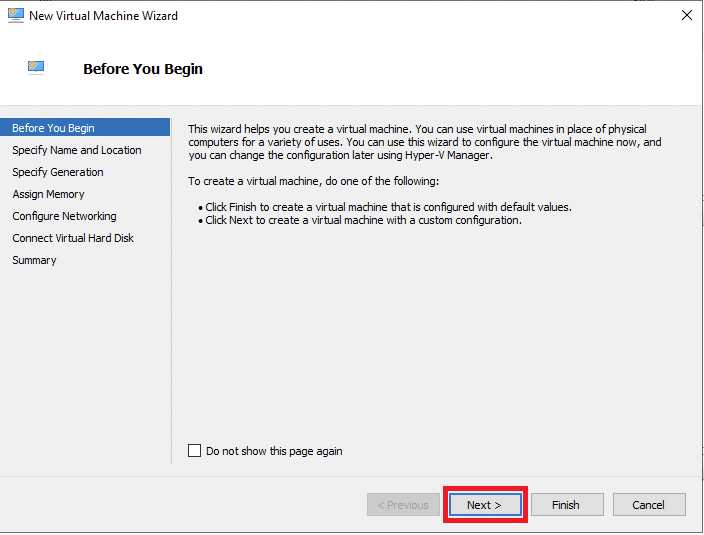
- Specify a name for the Service Gateway virtual appliance and
click Next.
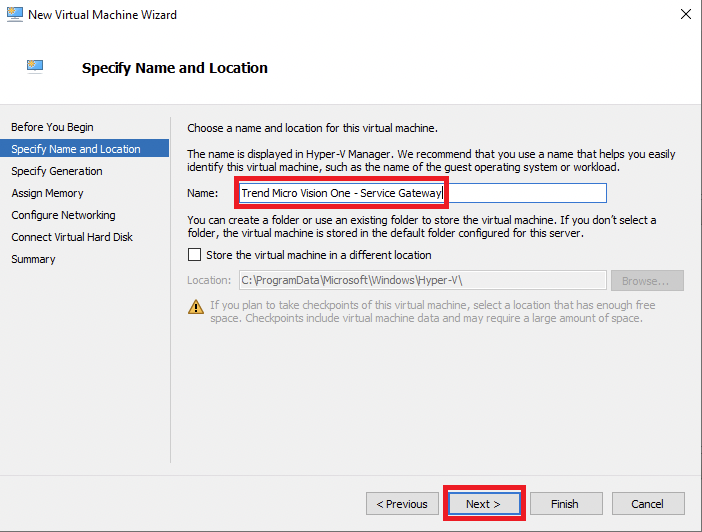
- Specify Generation 1 and click
Next.
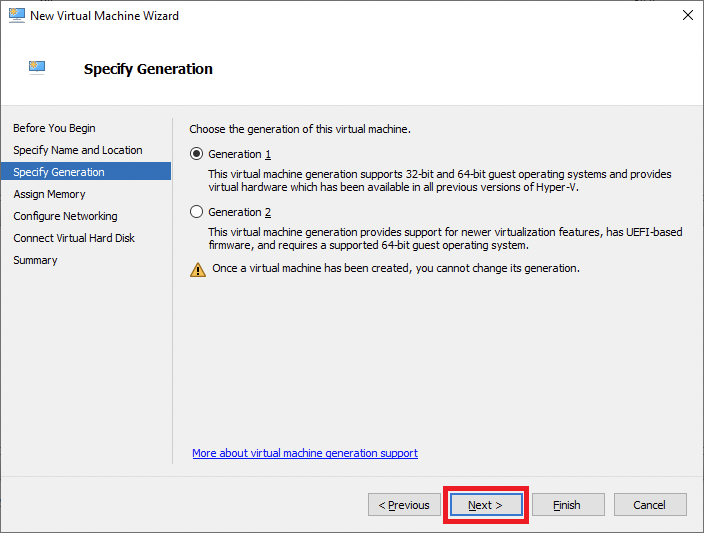
- Specify the amount of memory needed for the VM based on the
system requirements, and then click Next.
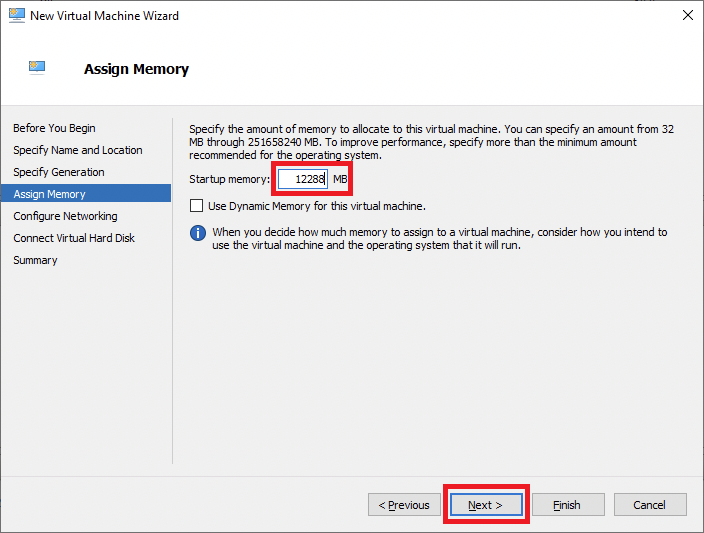
- Specify the network connection that the VM will use, and
then click Next.

- Click Use an existing virtual hard
disk, and then click
Browse.

- Navigate to the location where you extracted the VHD file,
select the file, and then click Open.

- Click Next.
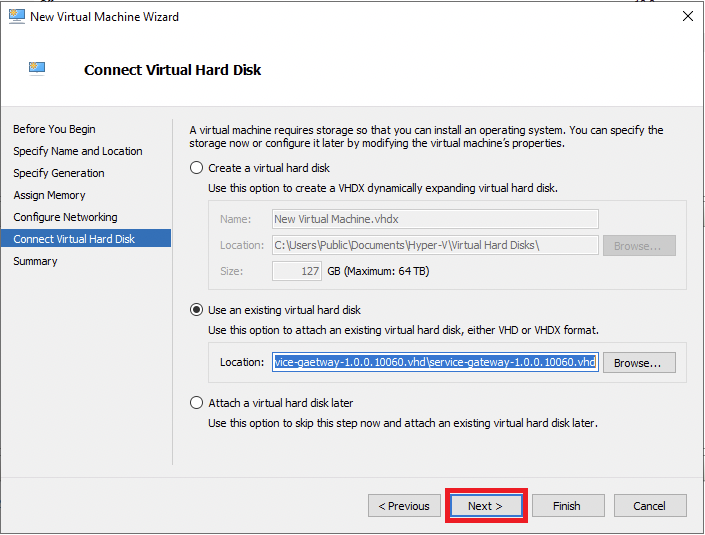
- Review the settings, and then click
Finish.
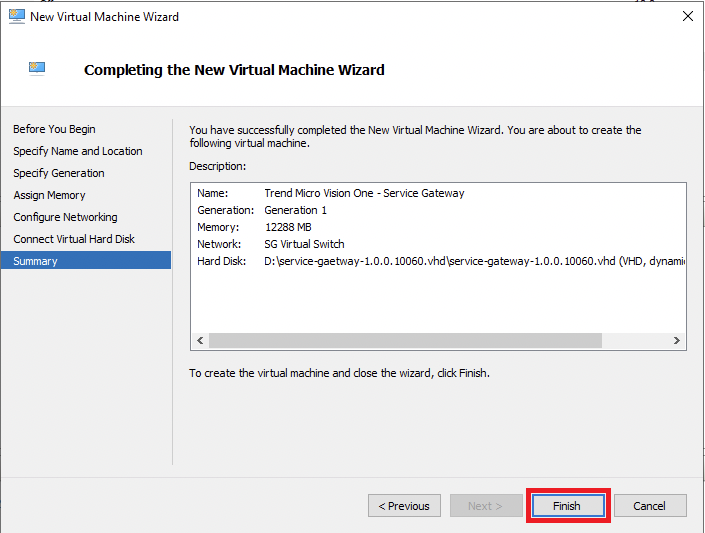
- From the Hyper-V Manager
Virtual Machines list, right-click on the Service
Gateway virtual appliance and click
Settings.
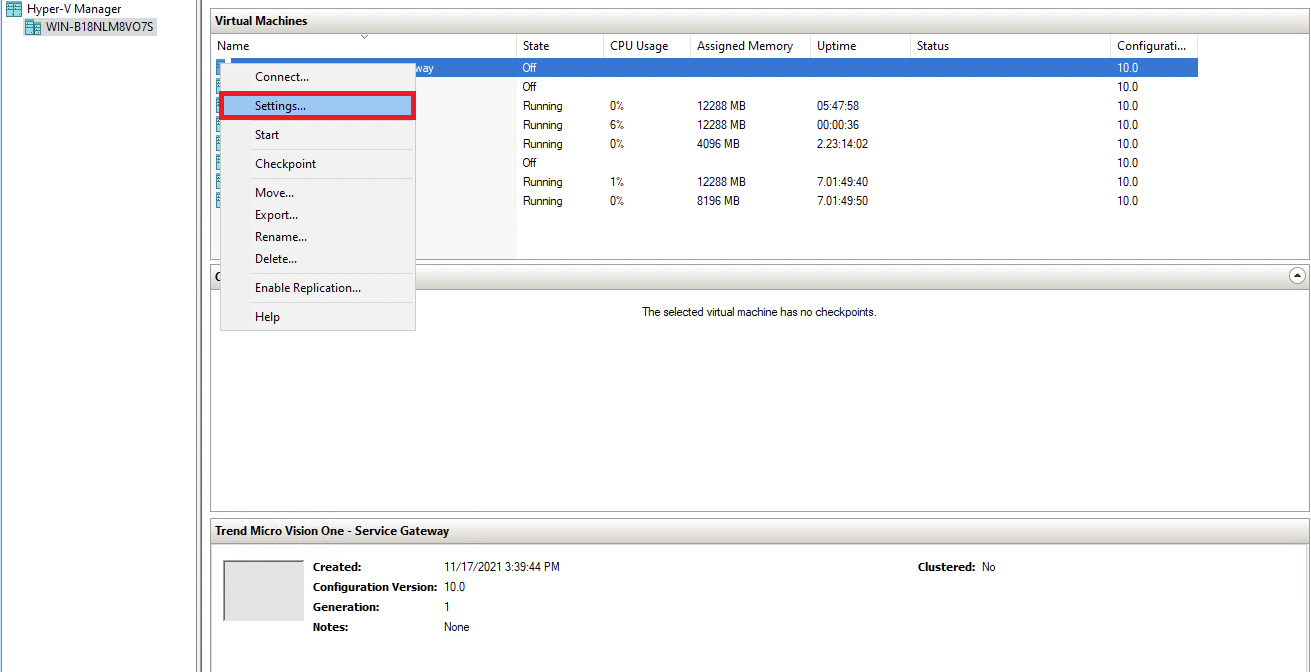
- Click Processor, specify the
number of virtual processors, and then click
OK.
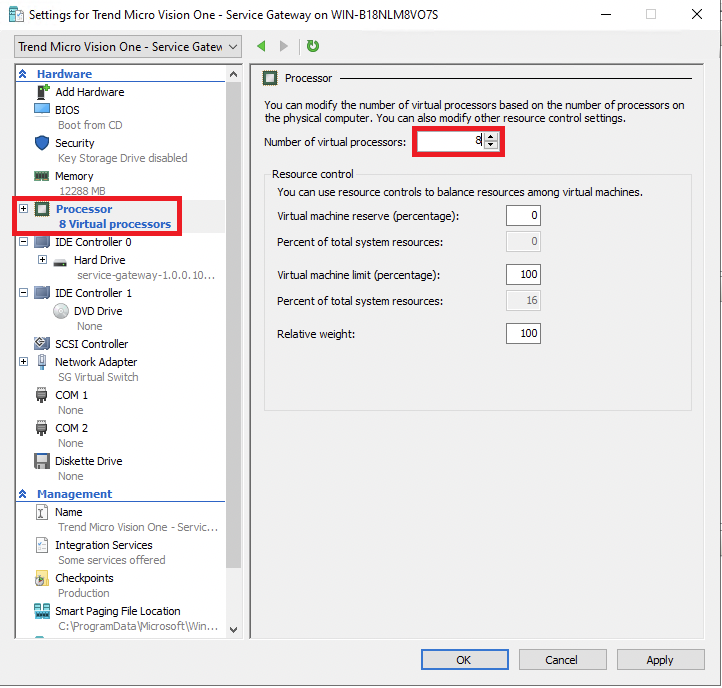
- On Hyper-V Manager, right-click on your machine and .
- From the Hyper-V Manager
Virtual Machines list, right-click on the Service Gateway
virtual appliance and click Connect.
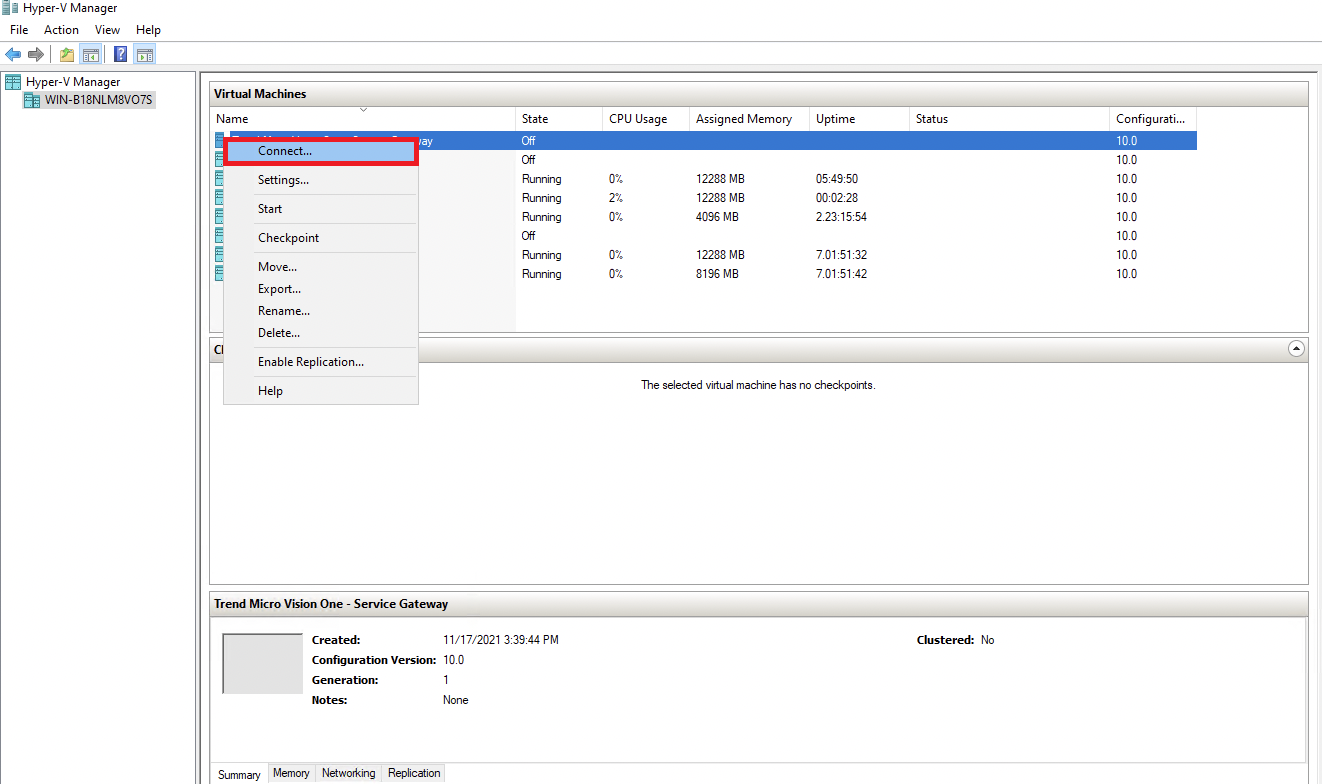
- Click Start to start the virtual machine. Service installation during the first launch of the appliance takes approximately 10 minutes.

- On the Service Gateway virtual appliance, log on to the Command Line
Interface (CLI) with the default credentials.User name: adminPassword: V1SG@2021
- Change your password.
- Type enable and press the
ENTERkey to enable administrative commands. Provide your password when asked.The command prompt changes from > to #. - Configure the required network settings using the following CLISH
commands.
Configure network primary ipv4.static <interface> <ip_cidr> <gateway> <dns1> [dns2] [cni]Configure static IPv4 network settings for the primary network interface<interface>: Name of the network interface (for example, eth0)<ip_cidr>: IPv4 address of the network interface in CIDR notation<gateway>: Gateway router address<dns1>: Primary DNS server address[dns2]: Secondary DNS server address[cni]: Internal network address pool (IP address ending in .0.0) - To register the Service Gateway virtual appliance to Trend Vision One, use an SSH
tool, such as the latest version of PuTTY, and using an account with
administrator privileges, type the following command.
register <registration_token>You can obtain the token from the same screen you download the virtual appliance on Trend Vision One (step 3).
Important
The virtual appliance only supports UTC time. Ensure your hypervisor is correctly configured.
Note
-
If your environment uses a local Network Time Protocol (NTP) server, make sure the NTP server synchronizes with the local time for successful registration.
-
Trend Micro recommends using an SSH client to easily copy and paste the registration token.
-
- Use the CLI to configure other settings, if required.For more information on available commands, see Service Gateway CLI Commands.For details on setting up a virtual appliance with two network cards, see Service Gateway Virtual Appliance dual network card configuration.

